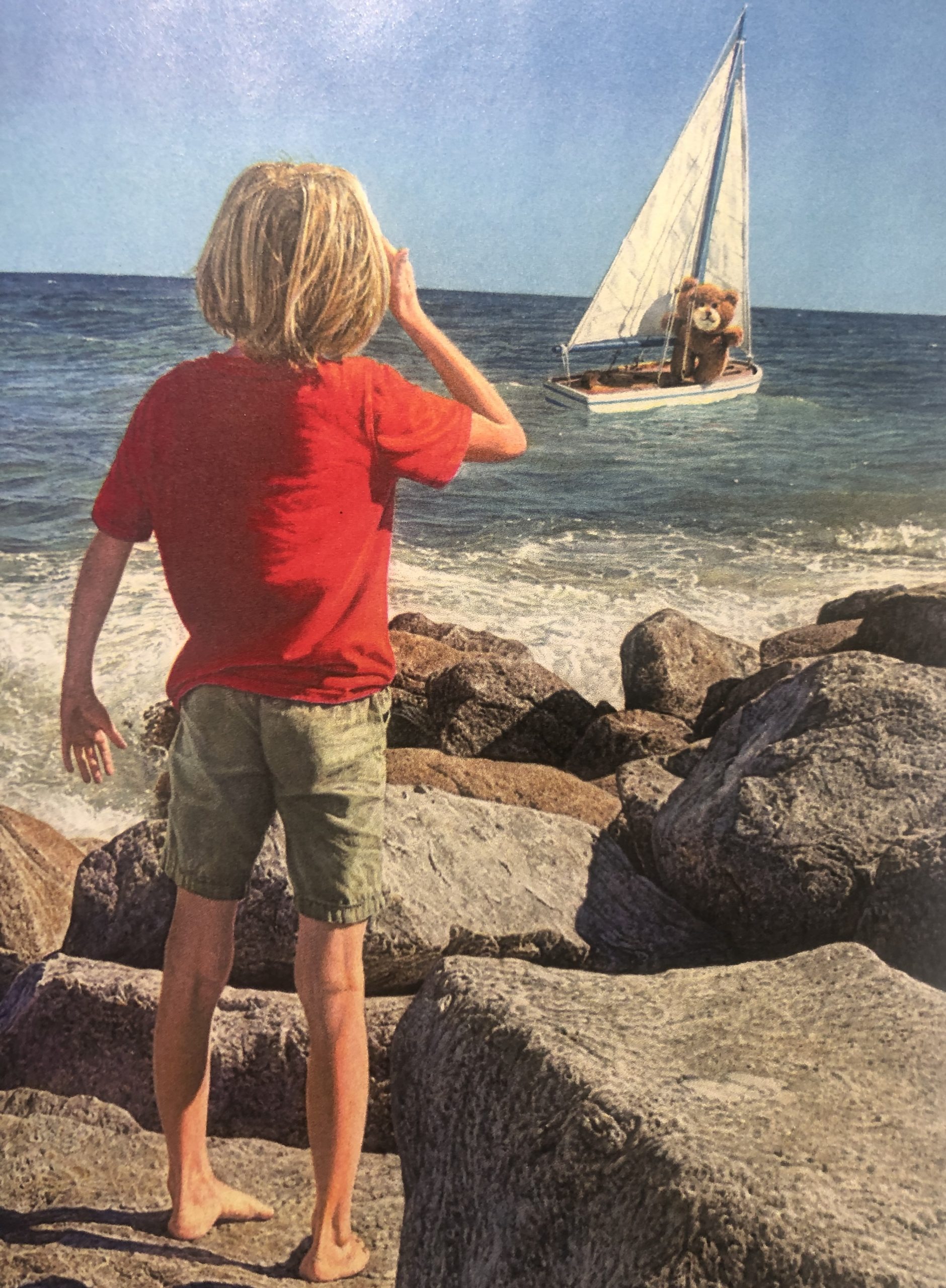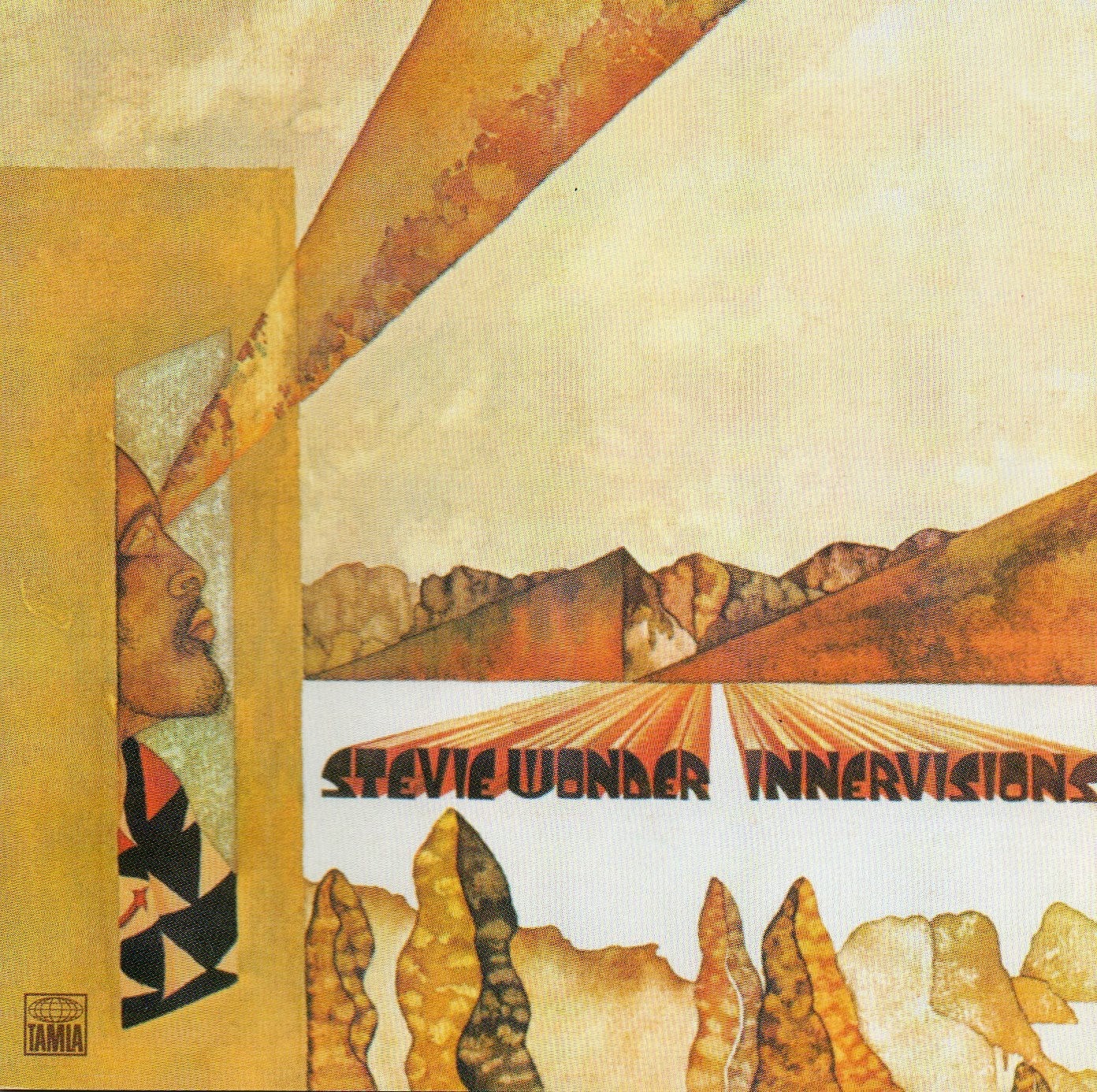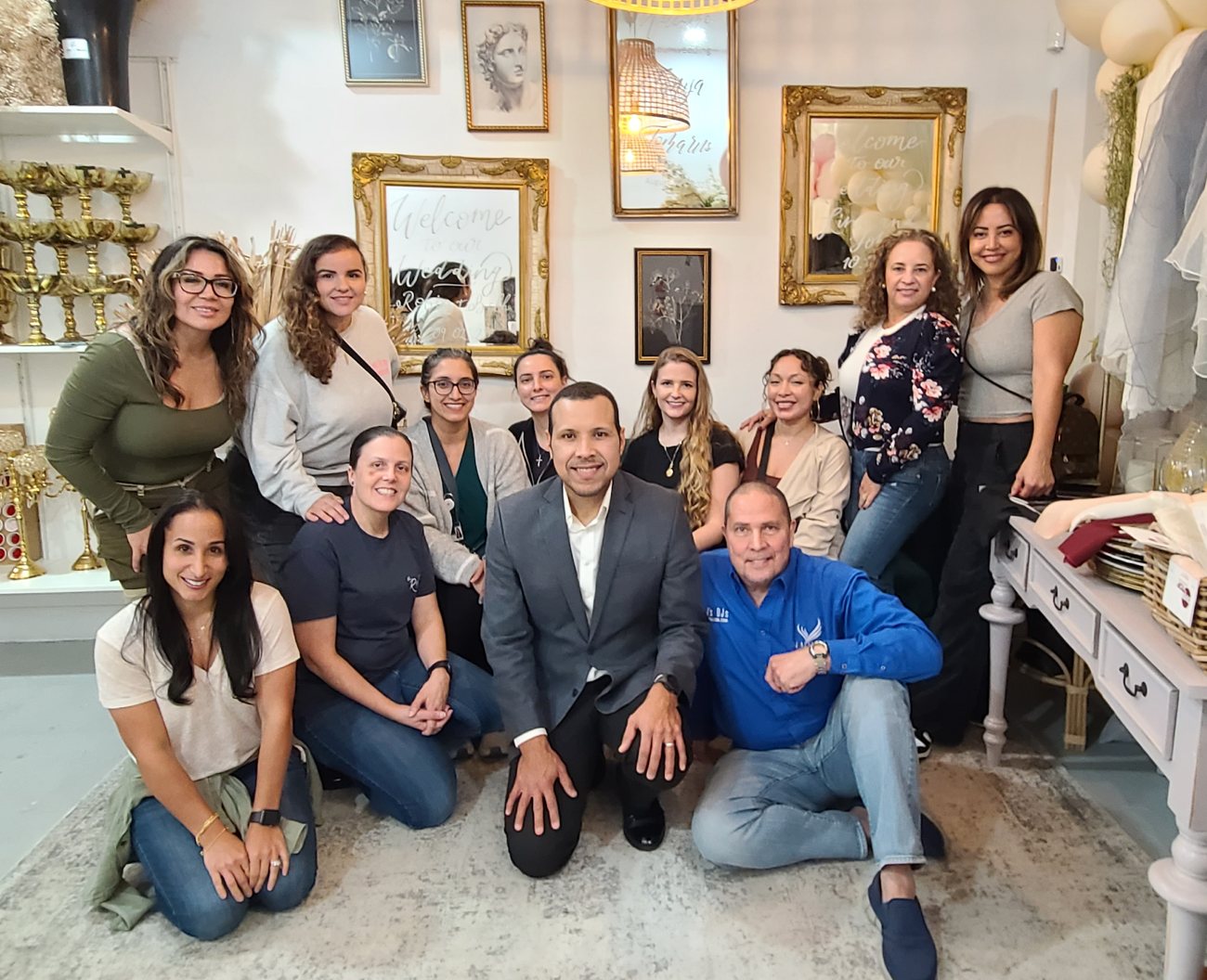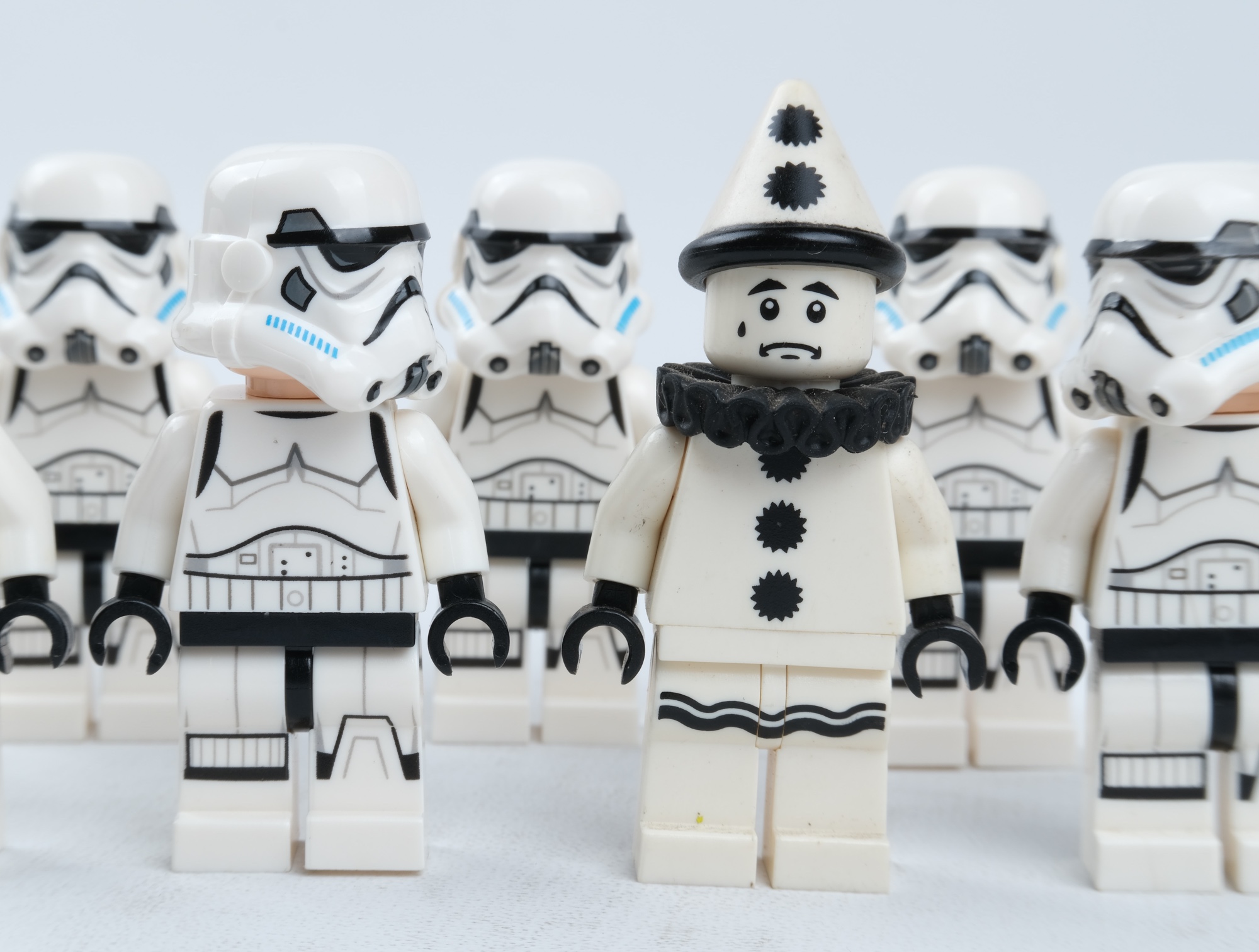Moving On
Don’t You Worry ‘Bout a Thing
Not for everyone…
Rising Tide Miami
My Prayer
Moving On

Painting by Doug Webb, “Moving On”, 2021
Acrylic on linen, 20 × 16 in | 50.8 × 40.6 cm
Autumn has come to the Magic City.
The last of the avocados has fallen; the plumeria trees, which many weeks ago shed their blossoms, are now busy shedding their leaves; the coffee shop down the street has been playing the holiday hits—on endless repeat—for many weeks now.
All this signals the obvious:
It’s time to start saying good-bye to 2023!
About good-byes…
I was looking through an art magazine a few days ago when I came across a Doug Webb painting that really hooked me.
It’s a scene of a boy, all of 11 years old, maybe 12, standing on a rocky sea shore looking at his beloved teddy bear sail away from him, forever. Teddy’s tiny sailboat is being swept away by the wind and the sea. He’s headed towards a distant horizon somewhere off in the uncertain distance, far outside the painting’s frame of view. Teddy seems to wave good-bye to the boy. In turn, the child’s right hand is positioned above his eyes in what I imagine to be a shaky, teary-eyed salute to his old and faithful friend.
The painting is titled, “Moving On.”
According to Webb:
The painting depicts a young boy saying goodbye to his faithful childhood companion, Teddy Bear, as he begins his transition to adulthood. It was inspired by the Bible scripture:
“When I was a child, I thought like a child, I reasoned like a child. When I became an adult, I put the ways of childhood behind me.”
-Corinthians 13:11
My Aha moment
True confession. I’ve been an entrepreneur for a good long time. I’ve spoken to thousands of small business owners in the past 15 years and I’ve coached hundreds of them one-on-one. All this experience, my own and that of others, led me a few years ago to a eureka moment.
I’ve come to realize that it’s not the technical aspects of launching, running and growing a small business (or a business of any size) that is the obstacle to growth.
By technical aspects I mean all the hard-skills they try to teach you in MBA programs.
Stuff like:
- How to write a proper business plan;
- Calculating your COGS;
- How to put together a balance sheet, profit and loss statement, and cashflow analysis.
- How to calculate your break-even or ROIC.
- Price elasticity, choosing a pricing strategy, or the 4 Ps of Marketing.
- And Porter’s five forces;
On and on, yada yada…
In case you haven’t noticed, we’re drowning in how-to information. Just Google any of the above topics and see what I mean. None of it is a mystery. Knowledge abounds! So do MBAs.
And yet, despite this oceanic reservoir of knowledge, the struggle or failure rate of businesses of any size remains steady and too high for my taste.
It’s not, of course, that technical know-how doesn’t matter. Of course it does, but the lackluster results despite all that wealth of readily accessible knowledge suggests that it’s not the paucity of technical knowledge that’s blocking our thriving as entrepreneurs.
It’s something else entirely.
But what?
One word.
Mindset.
According to Merriam-Webster, a mindset is “a mental attitude or inclination; a fixed state of mind.”
In other words, mindset is the compendium of stories we tell ourselves about ourselves and the word-at-large. Too often those stories are crafted to help us stay in our well-explored comfort zones, where we can effortlessly maintain a sense of safety.
These comforting but limiting stories are the Teddy Bears we need to move on from.
Before the year’s end…
A useful exercise might be to take a hard look at Doug Webb’s painting and ask ourselves:
What are the Teddy Bears we need to say good-bye to?
What childhood thoughts or childhood reasoning are we clinging to that we need to move on from?
What stories are no longer serving us that we should let go of in 2024?
Too often I hear things like:
- “I’m not good with numbers.
- “I can’t write.”
- “I’m terrible with money.”
- “I could never be a good public speaker.”
- “I don’t have anything to say that people would be interested in.”
But none of that is actually true.
Those are all excuses, often created during our early years. They’re the Teddy Bears or security blankets that we cling to because it can be scary to try something new and unknown. It can be frightening to muster the courage to step into a new field of possibility.
This inner friction is what Stephen Pressfield calls “the resistance.” It’s the scared part of us who wants to let go but just can’t.
Identifying this, and moving on, just might make all the difference in 2024.
Maybe we should give it a try?
Don’t You Worry ‘Bout a Thing

One of my favorite Stevie Wonder songs (among many) is, Don’t You Worry Bout a Thing, from his 1973 album, Innervisions. It’s easily the most playful and joyful song on a heavy, thought-provoking record decrying the injustices of the era.
Fifty years later, the song’s title does double-duty for me as a useful mantra and a much-needed reminder to chill out and let go when things get overwhelming.
Don’t you worry ’bout a thing…
It’s not flippancy, nor is it license to live in blissful ignorance, or to abdicate responsibility altogether. It’s actually an invitation to go out and explore, and live, and decide for yourself how you’ll show up:
Everybody needs a change
A chance to check out the new
But you’re the only one to see
The changes you take yourself through
Don’t you worry ’bout a thing
I like the song’s playful nature, probably because I can be quite the worrier. As a survivor, I fancy being able to see around corners and spot threats long before others can. It’s a strength. But trust me, hyper-vigilance is no day at the beach. It wears and tears at you; it’ll straight up give you a belly-ache.
That’s not to say worry is altogether bad. Deep down, it’s rooted in a biological imperative. Our worry is trying to keep us alive. It’s an alarm, a signal, a message about a threat (real or perceived) that needs our attention; and because we’re wired for it, it’s foolish to ignore or suppress it.
The problem, of course, is that there’s never been a shortage of things to worry about, not to mention that, today, there might actually be more reasons to worry. And, to make matters worse, our digital devices keep feeding us worrisome tidbits triggering our FOMO, or worse. This means that it’s easier to be a worrier, even if you’re only slightly so inclined. And if you’re a solopreneur or small business owner, then OMG, pour a gallon of risk and a liter of uncertainty into the mix.
Which is to say—it can get to be too damn much at times.
But worrying, as we all know, is weak sauce.
As Mark Twain once confessed:
I have known many sorrows, most of which never happened.”
We conjure up tragedies that haven’t happened and lament them as if they have. According to research professor, Brene Brown, “Worrying and anxiety go together, but worry is the thinking part of anxiety. Worry is described as a chain of negative thoughts about bad things that might happen in the future.” This chain of negative thoughts can shut us down (avoidance), or whip us into a frenzy of ill-conceived action (at least we’re doing something about it, right?). We under or overcompensate and in doing so we often make worry’s conjurings real.
So how do we stop fusing with worry?
What works for me, and might work for you, is to acknowledge the worry and accept that it’s there, that it’s not going anywhere, and that it’s ok. Worry is not an enemy, remember? It’s more like a busybody friend who loves you but has questionable judgement and a funny way of showing its appreciation. See worry in a different light, that’s step one.
Step two is what Professor Elizabeth Stanley taught me: the contact points exercise. It’s a variation of the “body scan” mindfulness practice that you might already be familiar with. If you contact Prof. Stanley, she’ll send you the exercise instructions. Or, you can also check out a simple grounding exercise here.
It turns out that these exercises work in reducing worry or anxiety because your survival brain (the worrier in you who’s panicking) cannot be fully engaged at the same time as your thinking brain. According to Prof. Stanley:
By directing your attention to the sensations of contact between your body and surroundings, your can show your survival brain that you’re grounded, stable, and safe.
It also helps to know that you can practice all this before worry gets bad. You can do it upon rising in the morning, or after a cardio workout, for example, as a way of rewiring your brain to maintain safety at all times and widen your window and improve your tolerance for stress.
Then and only then, once safety has been established, can we try to understand what the worry is trying to tell us and what we might be able to do about it.
For example:
- What’s the “problem” our worry seems to think we have? Where’s the opportunity or challenge in that “problem”? What fears or other negative emotions is it dredging up for us? Why do you think that is?
And…
- How might I take advantage of the opportunity to grow, or face the challenge that worry is pointing to? What productive action might I be able to take right now? What might I need to start doing? What might I need to stop doing?
Then, after thoughtful consideration, which you might even choose to record in a journal or notebook, take a few slow, deep breaths and get back to the joy of living, unburdened by worry.
Don’t you worry ‘bout a thing.
It all sounds so easy to do, but it isn’t. It takes practice to accept and commit to dealing with our worry in a productive way. It would be so much easier to be like Mr. Spock on Star Trek, a member of an alien race to whom worry is a nonexistent form of cognition and flat out “illogical.” But, whether we like it or not, to worry is to be human, let’s rejoice in that fact and move on.
I think music can help.
Enter the playful lyrics and Latin rhythms in Stevie Wonder’s song, which do not fail to make me smile.
In a heavy, soulful album, maybe Don’t You Worry ‘Bout a Thing was about an artist reconnecting with pure, unadulterated joy, if only for a single track.
It makes sense. Even in worrisome times there’s great beauty all around, and plenty of things to be thankful for. Practicing our ability to see them is the only way to stay sane in what often seems like an unjust and brutish world.
So this Thanksgiving, my friend, my hope is that you don’t worry about a single thing. I wish you joy!
To help us all connect with gladness, I made a Spotify playlist for you, of the songs that help me stop worrying and jump back to the sunny side of life. The tracks span languages, genres and generations but I hope they make you smile, and better yet, I hope they make you shake your groove thing.
Wishing you and your family the very best, always.
Not for everyone…
If there’s a quintessential rule in marketing, it’s probably this: that whatever your contribution, whatever your art, whatever you make with your own two mitts, whatever you choose to gift to the world…
It ain’t for everyone.
But if we only look to influencer culture’s drive to be famous, or high-growth start-up culture’s drive to dominate markets, we can be forgiven for thinking that we need to connect with everyone—the faster the better.
Not true, though.
Sixteen years later, futurist Kevin Kelly is still right: you only need 1,000 true fans to make a handsome living, not millions of them. You don’t need a megahit or superstardom to make your mark. And there’s more good news: you have everything you need to connect with your true fans, at your fingertips, all practically free.
This means that for the first time in human history (or at least since the beginning of the industrial revolution), you—the daring creator—get to do the work you want to do and design the kind of life you want to live! It’s an unprecedented opportunity and an equally big responsibility.
Also, quite scary.
That’s because we’ve all been warned not to rock the boat; to just chill; play it safe; stay passive; consume!
Consuming and passively dreaming of achieving some level of stardom is a convenient excuse not to start doing work that truly matters to us. Then, a despairing sense of entitlement kicks in and traps us.
The trap is cleverly portrayed in Arcade Fire’s 2017 song, “Creature Comfort:”
Creature comfort, makes it painless
Bury me penniless and nameless
Born in a diamond mine
It’s all around you, but you can’t see it
Born in a diamond mine
It’s all around you, but you can’t touch it
Sayin’, “God, make me famous”
If you can’t, just make it painless”
Just make it painless
It’s an interesting tune with layers of meaning. But the takeaway for me (in addition to the heartbreaking realization that too many people, especially young people, see the world in this way) is that your success isn’t what other people say it is. It’s not something out there somewhere; nor can you find it in your bank balance, in the number of Likes on Facebook, in the comments section, or in any other external measure.
Success is what YOU design it to be.
Success comes from within, not from without.
So please, go ahead, dare to dance to your own music. Give the world your humble best. Enough people will find you and love you for it, and it will be more than enough.
Rising Tide Miami

President John F. Kennedy was fond of saying that, “A rising tide lifts all boats.” With those words, he was making a sensible economic argument: that our fates are intertwined; that our economy is based on our interdependence, and as such, we should work to create conditions that allow everyone to rise.
Last week, I had the great pleasure of sitting down with the community members of the Rising Tide Society’s Miami chapter at the offices of The Grazing Box Co in Coral Gables. They welcomed me with open arms to have a wide-ranging and frank discussion about the challenges faced by all entrepreneurs. I had the honor of sharing some of my ideas around value creation, branding, marketing, sales, finances and overcoming some of our inner barriers to success.
I really enjoyed spending quality time with these remarkable wedding industry professionals who live by the mantra, “community over competition.” These amazing entrepreneurs are not only committed to their own success but to the success of their customers and peers, with whom they take a supportive and collaborative approach.
We can all learn a lot from these exemplary leaders!
Special thanks to Claudia Rios of Claudia Rios Photography for connecting me.
Danilo Vargas
An artist, writer and small business coach, he’s the architect of Miami-Dade County’s STRIVE305 Small Business Program.








